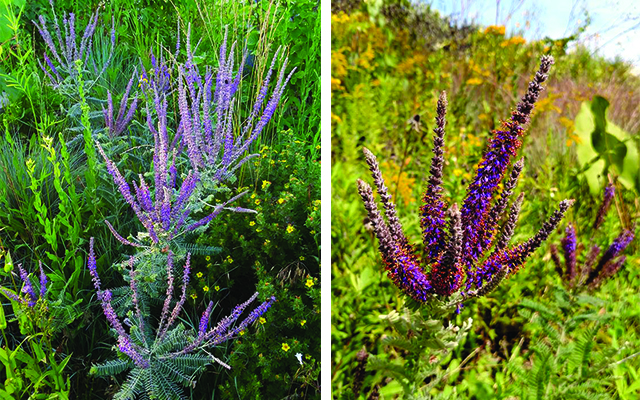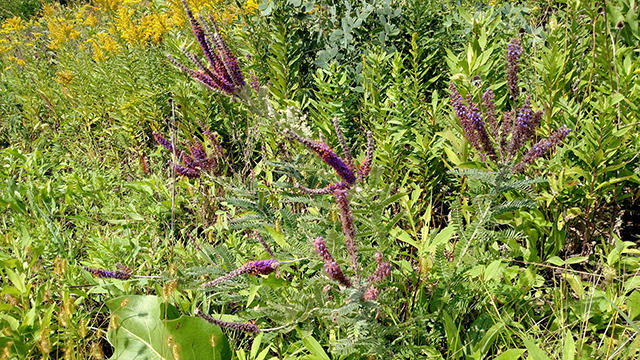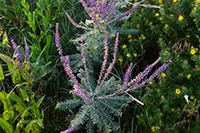In addition to providing food for pollinators, the leaves and stems support 9 species of moth caterpillars, 10 species of beetles, and 15 species of grasshoppers, which translate(s) into a lot of insect protein for birds and bats!

No two leadplant are the same, with variation in shape of plant and inflorescence, as well as intensity of flower color, demonstrating genetic diversity. Leadplant will grow in any type of soil provided it's in a well drained spot. While happiest in full sun, it will get by well enough in partial shade. Because this sub-shrub is adapted to fire it can be cut to ground level every year or every couple of years to rejuvenate its growth.
For those focusing on native plants, leadplant is a good native alternative to butterfly bush (Buddleja sp.) and Russian sage (Perovskia atriplicifolia). As a member of the pea family, leadplant partners with bacteria in its root nodules to convert atmospheric nitrogen to a form available to plants.
Join in on our weekly Botany Walks to learn more about native plants!






